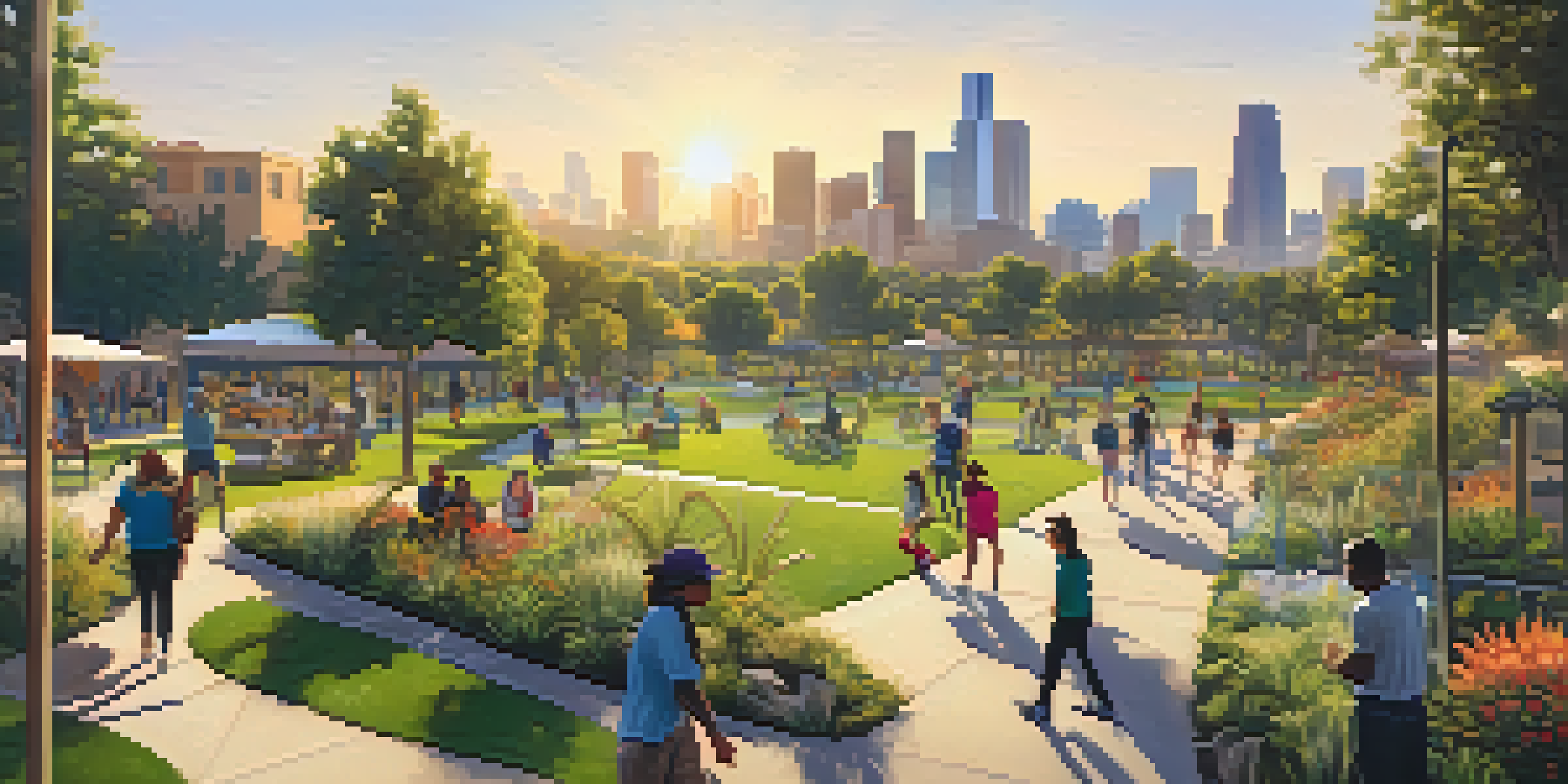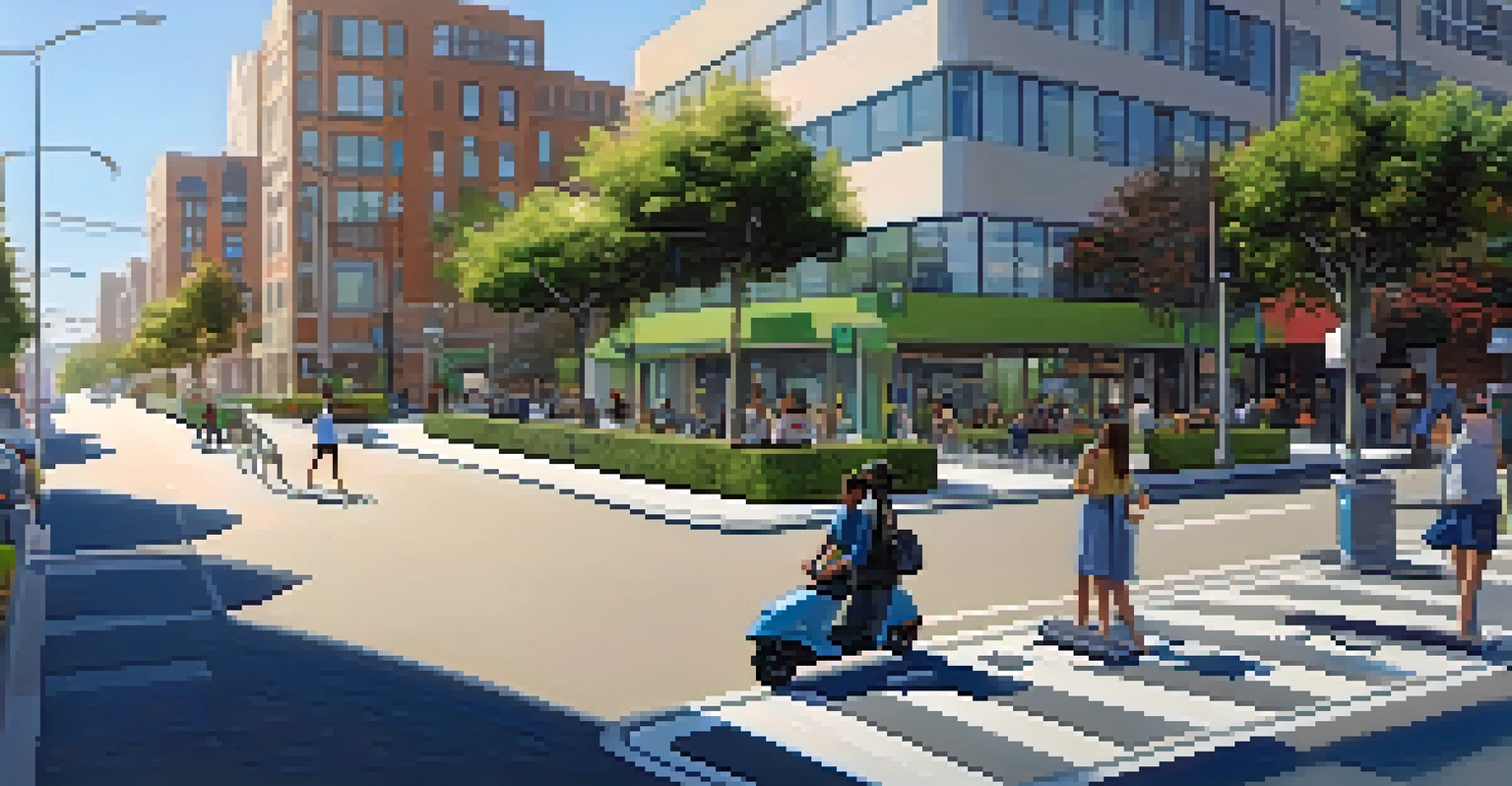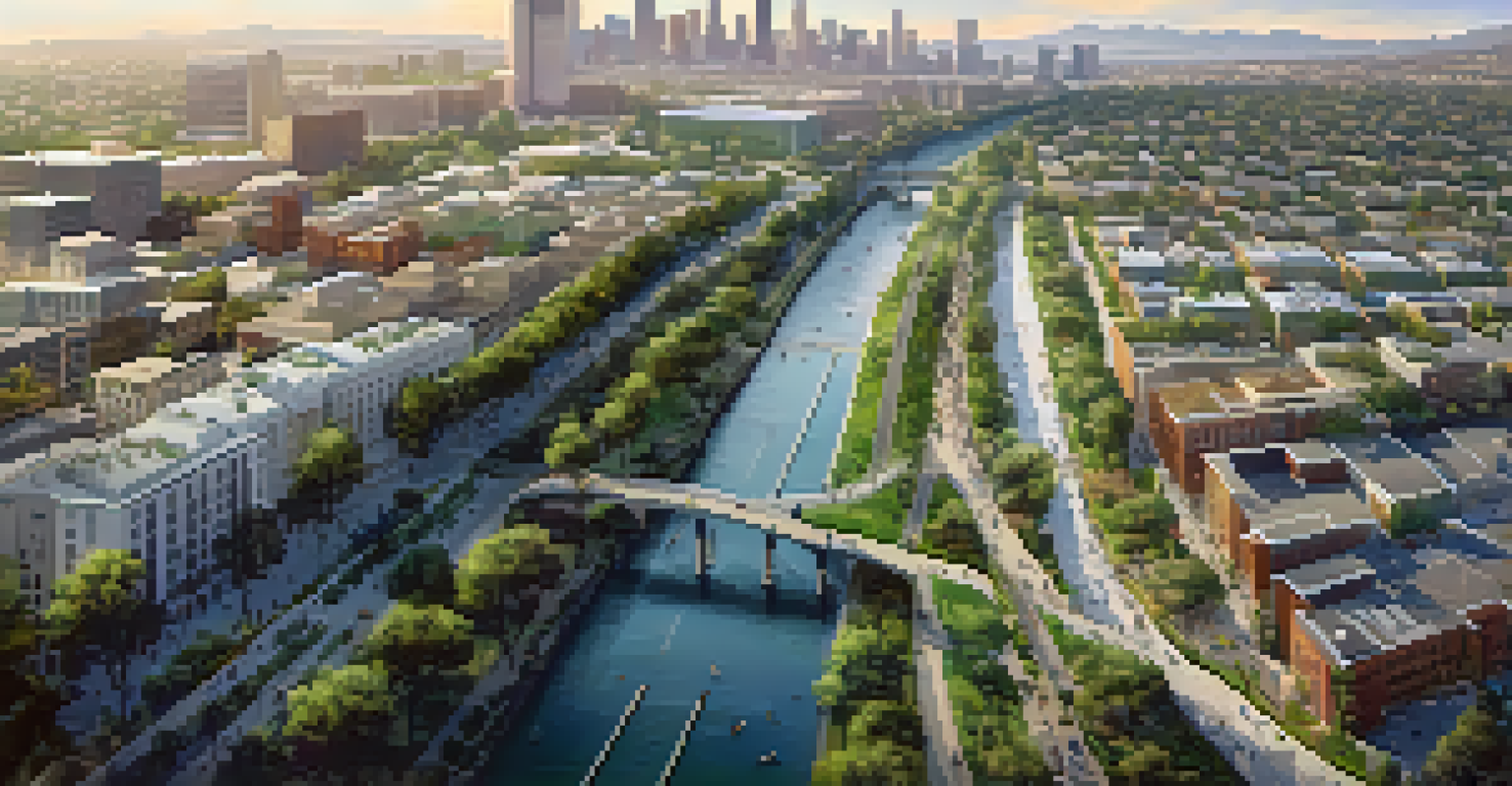Sustainable Urban Development in Los Angeles: A Trend Analysis

Understanding Sustainable Urban Development in LA
Sustainable urban development refers to creating cities that meet the needs of the present without compromising future generations. In Los Angeles, this concept is gaining traction as the city grapples with challenges like traffic congestion, housing shortages, and environmental concerns. By focusing on sustainability, LA aims to enhance the quality of life for its residents while preserving its unique natural beauty.
The future will be green, or not at all.
The approach to sustainable urban development in LA involves various strategies, including green building practices, efficient public transportation, and the incorporation of green spaces. These initiatives not only address environmental issues but also foster community engagement and economic growth. For instance, innovative mixed-use developments are popping up, blending residential, commercial, and recreational spaces in a way that encourages walking and biking.
Related Resource
As more Angelenos become aware of their environmental footprint, there's a growing demand for sustainable practices in urban planning. This shift is not just about the environment; it's about creating livable, equitable communities. The city's commitment to sustainability is evident in its policies and projects, paving the way for a greener future.
Key Trends Influencing LA's Urban Development
Several trends are shaping the landscape of sustainable urban development in Los Angeles. One significant trend is the increasing emphasis on public transportation, which aims to reduce reliance on cars and decrease traffic congestion. Projects like the expansion of the Metro system are vital in connecting neighborhoods and making commuting more accessible and eco-friendly.

Another trend is the rise of smart city technologies. By integrating data-driven solutions, LA is optimizing energy usage, improving waste management, and enhancing public safety. For example, smart sensors are being used to monitor air quality and traffic flow, allowing for more responsive urban planning decisions.
Sustainable Urban Strategies in LA
Los Angeles is adopting sustainable urban development practices like green building, public transportation enhancements, and green spaces to improve quality of life.
Additionally, the focus on affordable housing is critical in addressing social equity within urban development. Initiatives that promote the construction of sustainable, low-income housing are essential for ensuring that all residents can enjoy the benefits of a thriving, green city. These trends collectively reflect a commitment to creating a more sustainable and inclusive Los Angeles.
The Role of Green Infrastructure in Urban Planning
Green infrastructure plays a pivotal role in enhancing urban resilience in Los Angeles. This approach incorporates natural processes into urban settings, such as green roofs, permeable pavements, and urban forests. These elements not only help manage stormwater but also improve air quality and provide habitats for wildlife.
Sustainability is not a destination, but a journey.
For instance, the Los Angeles River revitalization project is a prime example of integrating green infrastructure into urban planning. By transforming the river into a green corridor, the city is improving biodiversity while providing recreational spaces for residents. This transformation also promotes a sense of community ownership and pride.
Related Resource
Moreover, green infrastructure contributes to climate adaptation by mitigating the urban heat island effect. As temperatures rise, these natural solutions can cool down neighborhoods, making them more comfortable for residents. Ultimately, investing in green infrastructure is a win-win for both the environment and the community.
Community Engagement in Sustainable Development
Community engagement is crucial for the success of sustainable urban development in Los Angeles. When residents are involved in the planning process, their insights and preferences can lead to more effective and relevant solutions. This participatory approach helps ensure that development projects meet the actual needs of the community.
One way LA fosters community engagement is through workshops and public forums, where citizens can voice their concerns and ideas. These gatherings not only educate residents about sustainability but also empower them to take an active role in shaping their neighborhoods. For example, community-led initiatives have successfully transformed vacant lots into vibrant parks.
Community Engagement is Essential
Active community involvement in planning processes leads to more effective and relevant sustainable development solutions in Los Angeles.
Additionally, collaboration between local organizations and government agencies enhances the impact of sustainability efforts. By working together, stakeholders can leverage resources and expertise to create meaningful change. Ultimately, a strong sense of community ownership is key to the long-term success of sustainable urban development.
Innovative Technologies Supporting Urban Sustainability
Innovative technologies are revolutionizing sustainable urban development in Los Angeles. From advanced energy-efficient building designs to eco-friendly transportation options, technology is at the forefront of creating a greener city. For instance, the use of solar panels and energy storage systems in new developments is helping reduce reliance on fossil fuels.
Smart transportation solutions, such as ride-sharing apps and electric vehicle charging stations, are also gaining popularity. These technologies not only provide convenient options for residents but also contribute to lowering carbon emissions. By making sustainable transportation choices more accessible, LA is encouraging a shift away from traditional car usage.
Related Resource
Moreover, data analytics plays a significant role in urban planning. By analyzing patterns in traffic, energy use, and public health, city planners can make informed decisions that benefit both the environment and residents. As technology continues to evolve, its integration into urban development will be essential for achieving long-term sustainability goals.
Policy Frameworks Supporting Sustainable Development
Effective policies are the backbone of sustainable urban development in Los Angeles. The city has implemented several frameworks aimed at promoting sustainability through zoning laws, building codes, and environmental regulations. These policies ensure that developers adhere to standards that prioritize eco-friendly practices.
One notable policy is the Los Angeles Green Building Code, which mandates energy efficiency and sustainability in new construction. This code encourages the use of renewable materials and technologies, helping to reduce the overall environmental impact of buildings. By setting these standards, LA is fostering a culture of sustainability among developers and builders.
Technology Drives Urban Sustainability
Innovative technologies, including smart transportation and data analytics, are crucial for advancing sustainable urban development in Los Angeles.
Additionally, the city's commitment to reducing greenhouse gas emissions through initiatives like the Sustainable City pLAn reflects a forward-thinking approach to urban development. By aligning policies with sustainability goals, Los Angeles is paving the way for a resilient and thriving urban environment.
Challenges and Future Outlook for Sustainable Development
Despite the progress made in sustainable urban development, Los Angeles faces several challenges. One major hurdle is the city's sprawling nature, which complicates efforts to create walkable and connected communities. Addressing this issue requires innovative solutions that promote density while respecting the character of existing neighborhoods.
Another challenge is the need for significant investment in infrastructure improvements. Upgrading public transportation and enhancing green spaces demand substantial funding and resources. However, the potential long-term benefits, including reduced emissions and improved quality of life, make these investments worthwhile.

Looking ahead, the future of sustainable urban development in Los Angeles appears promising. With a growing awareness of environmental issues and the commitment of local leaders, there's an opportunity to create a city that embodies sustainability. By continuing to embrace innovative practices, engage communities, and adapt policies, LA can become a model for urban sustainability.